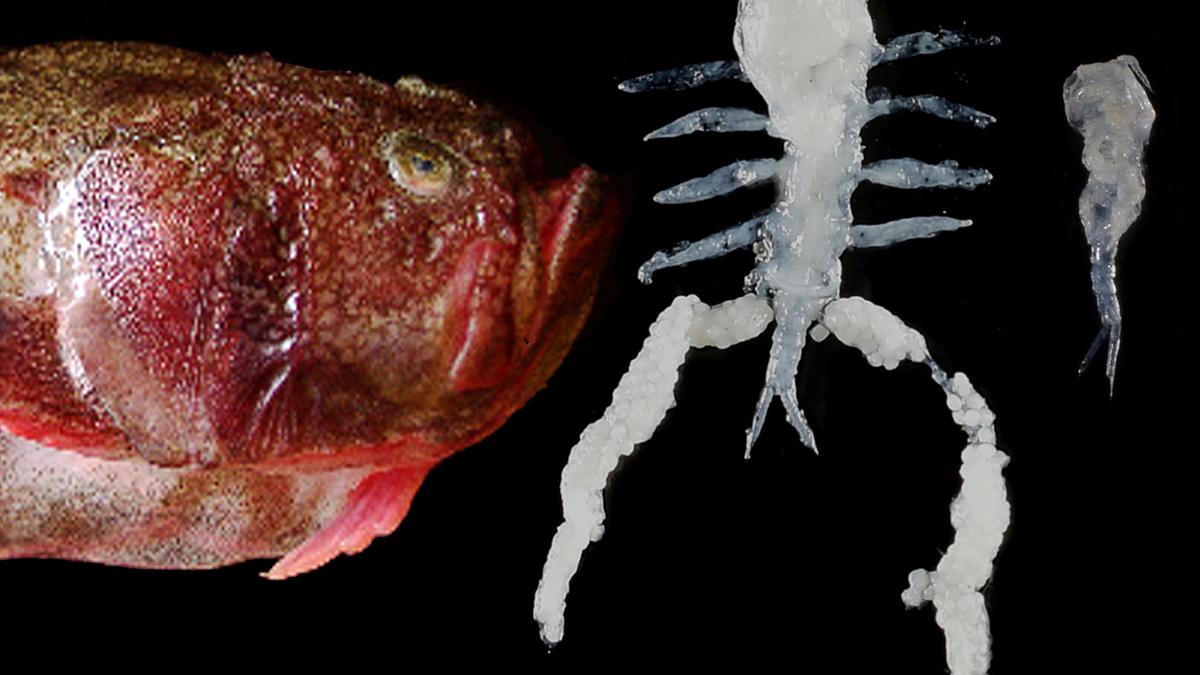Table of Contents
Significance of the Study
An ongoing study of deep-sea crustaceans off the Indian coast has led to groundbreaking discoveries in the field of marine biodiversity. The discoveries include a previously unknown family, two new genera, and four new species of millimeter-sized crustacean parasites that infest fishes and other marine life forms. This new information is critical in shaping our understanding of marine biodiversity and ecological dynamics.
Features of the Discoveries
Researchers performing the biodiversity study in collaboration with the Lee Kong Chian Natural History Museum, National University of Singapore, have identified the new family Uranoscopicolaidae, and two new genera and four new species of crustacean parasites. One of the new species, Cardiodectes vampire, has been named after the mythical creature which feeds on the blood of the living, due to its translucent red color.
Objectives of the Study
The primary objective of the study is to uncover previously unknown species of deep-sea crustaceans, with a particular focus on parasitic copepods. This research aims to enrich our knowledge of the marine food web and the associations that exist in unknown marine habitats.
Effects of the Discoveries
The discoveries from this study have the potential to redefine our understanding of marine ecology and will contribute to shaping future conservation efforts in the marine environment. By identifying and characterizing new species, researchers can gain insight into the role of previously understudied deep-sea crustaceans in marine biodiversity and ecological dynamics.
Pros and Cons
One potential drawback of these discoveries is the identification of new parasitic species that could have implications for the health and survival of host organisms. However, the knowledge gained from these discoveries can also provide valuable insights into the functioning of marine ecosystems and potentially aid in the development of new conservation strategies.
Fun Fact
This study has led to the discovery and description of a new crustacean family from India, making this a significant contribution to the field of marine biology and deep-sea ecology.
In conclusion, the ongoing study on deep-sea crustaceans off the Indian coast has provided valuable insights into the biodiversity of marine ecosystems. The discoveries of a previously unknown family, new genera, and new species of millimeter-sized crustacean parasites mark a significant advancement in our understanding of deep-sea ecology and marine biodiversity.
Brief Summary | UPSC – IAS
Researchers studying deep-sea crustaceans off the Indian coast have discovered a previously unknown family, two new genera, and four new species of millimeter-sized crustacean parasites. The discoveries included a new family named Uranoscopicolaidae, a new genus and species named Hirodai ohtsukai, a new genus and isopod species named Glyptothoa sagara, another new isopod species named Elthusa aquabio, and a flesh-penetrating parasitic copepod named Cardiodectes vampire. These discoveries were made through a study performed by the Department of Aquatic Biology and Fisheries, University of Kerala, in collaboration with the Lee Kong Chian Natural History Museum, National University of Singapore. The findings were published in the journals Natural History and Zoological Studies.







